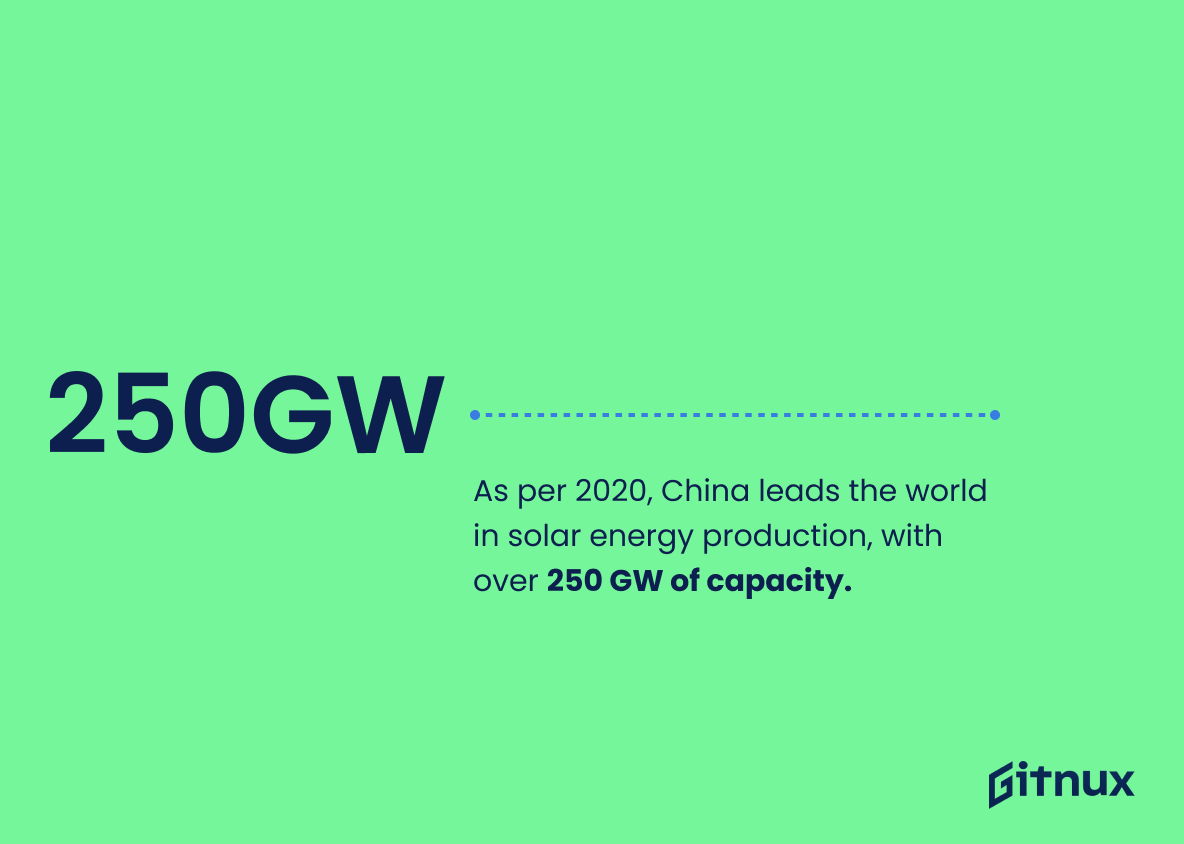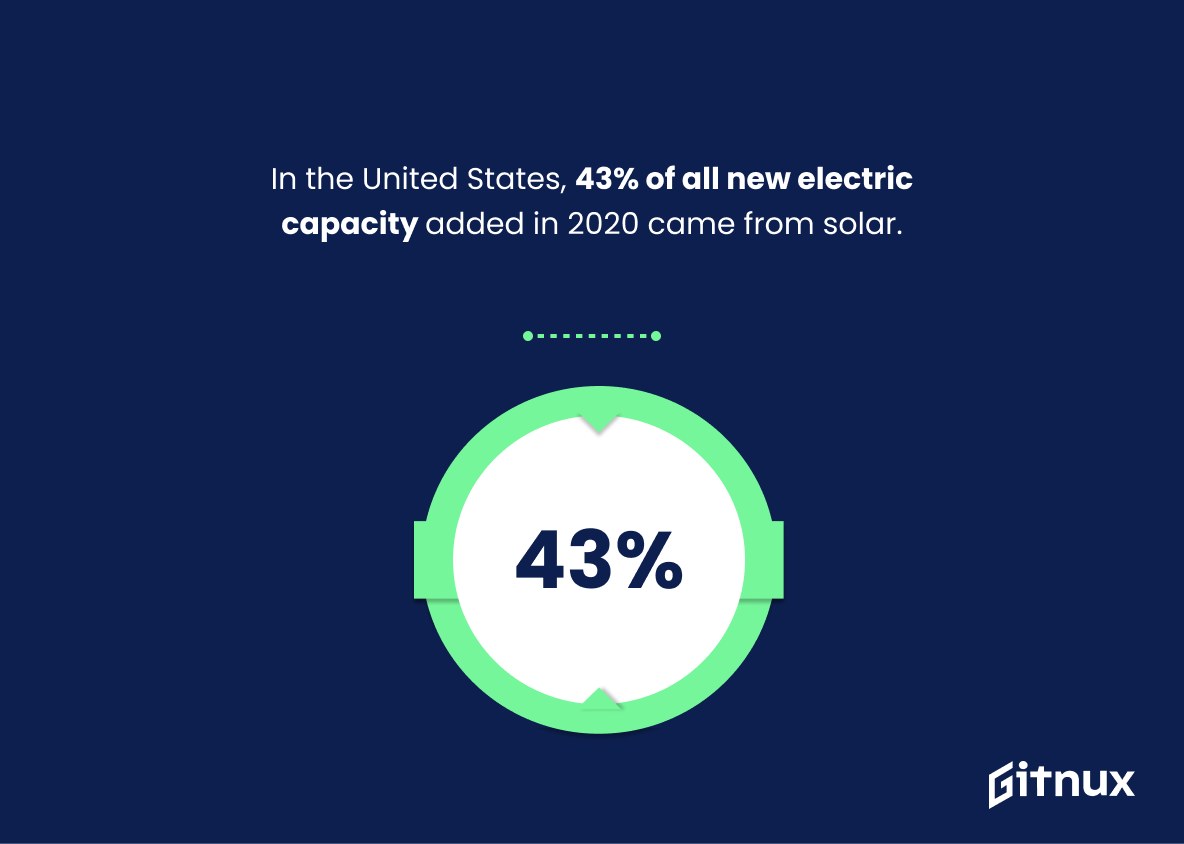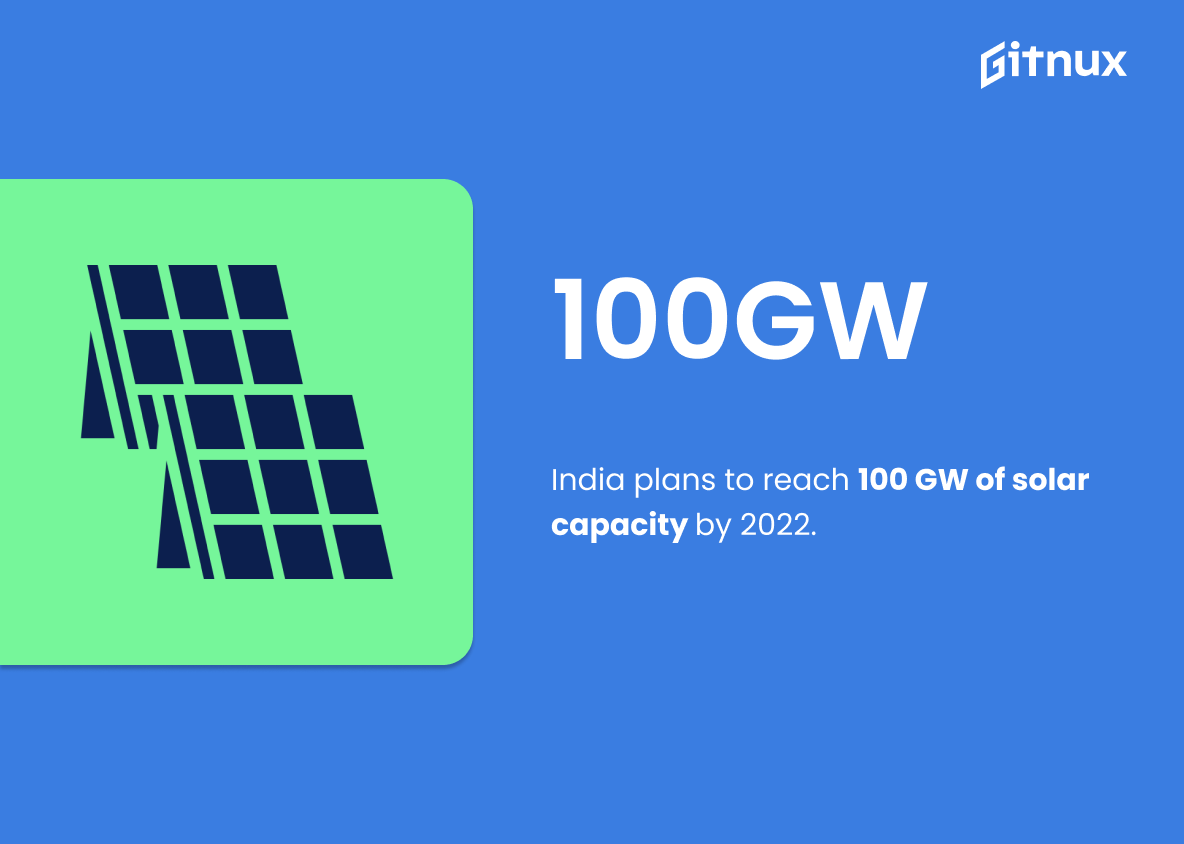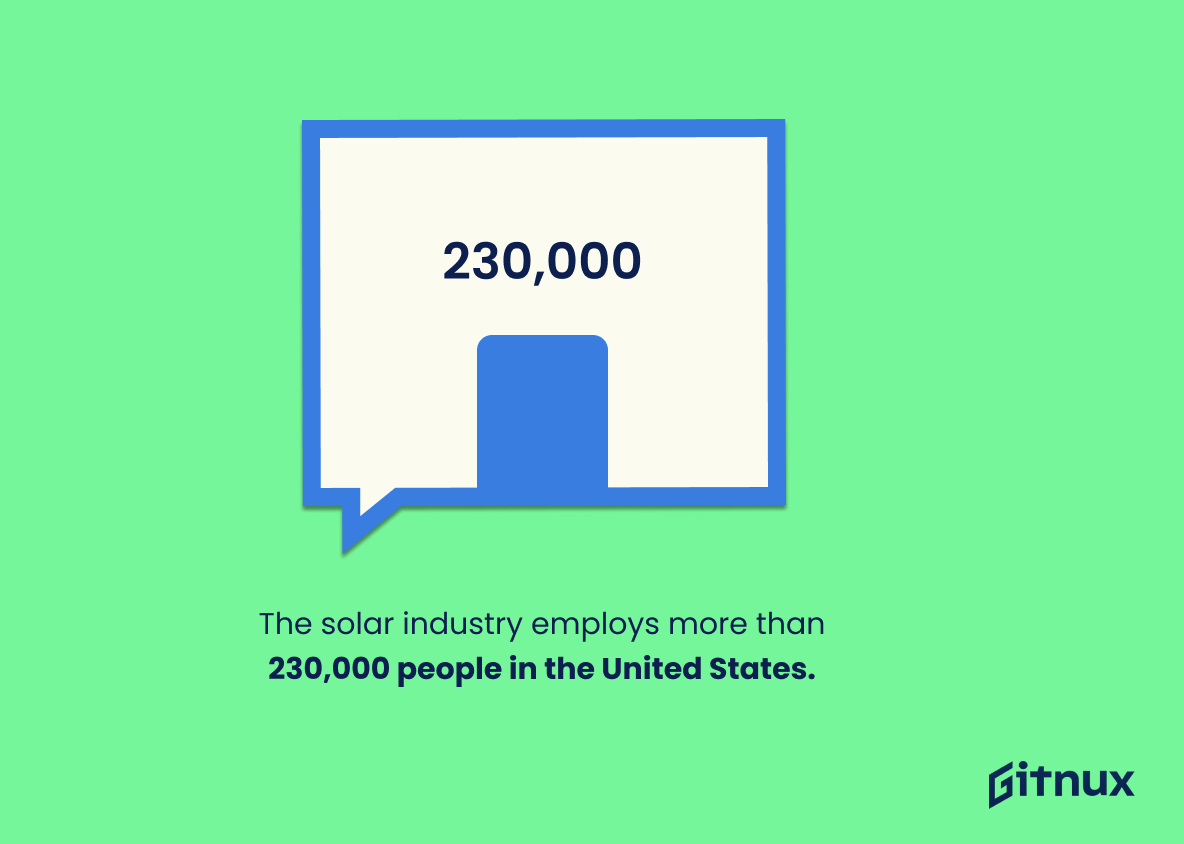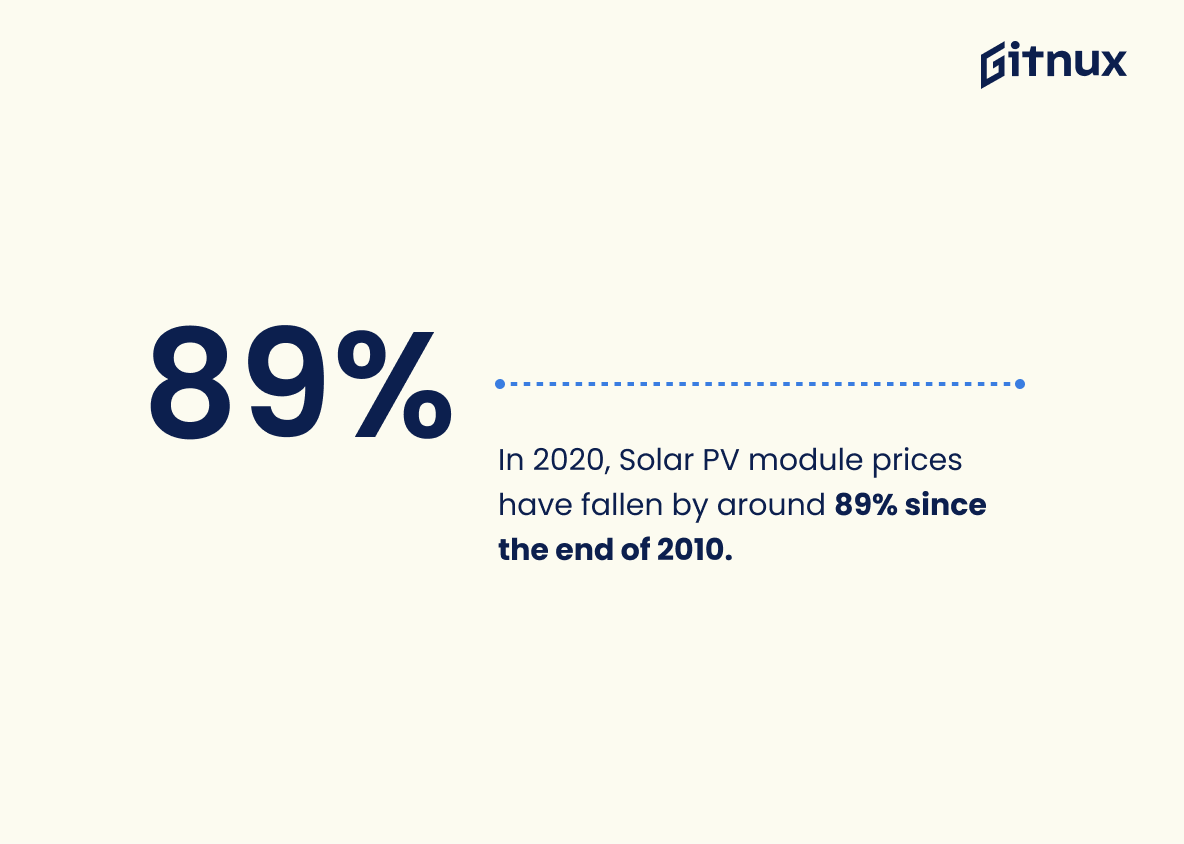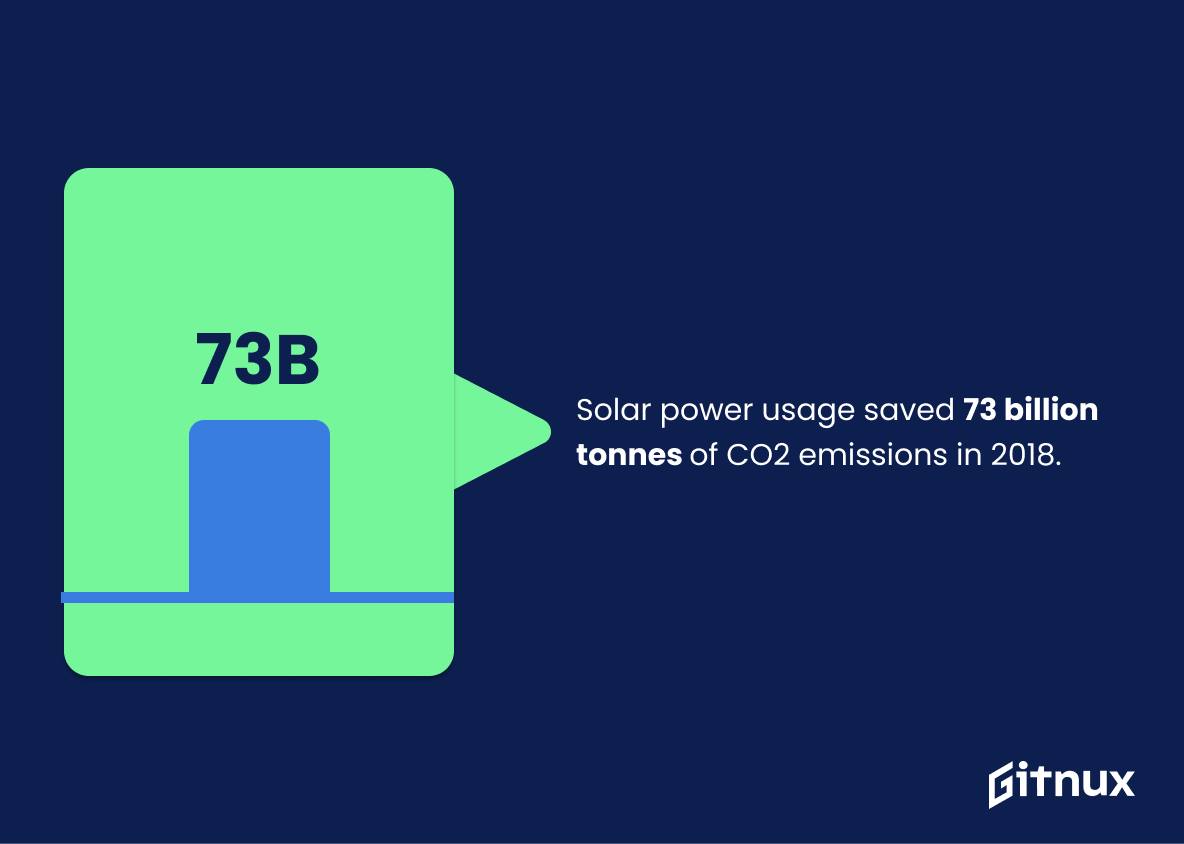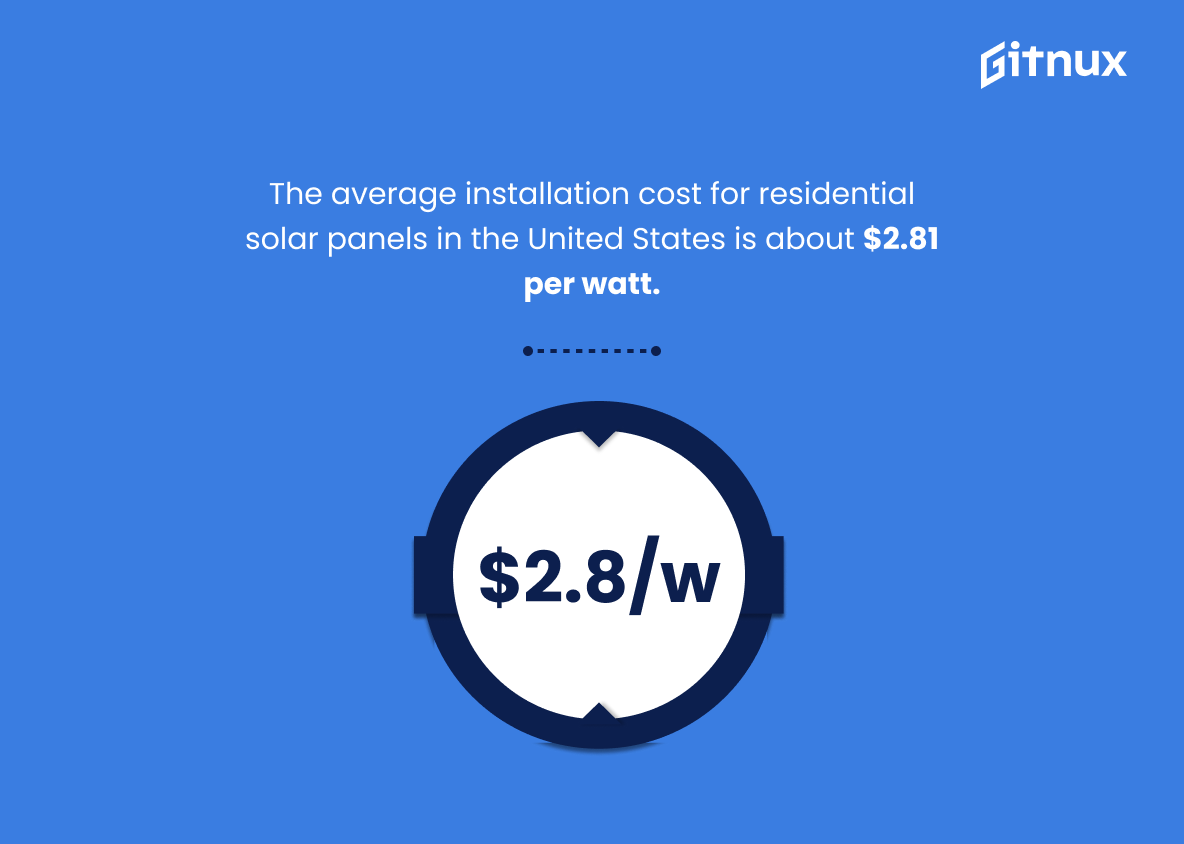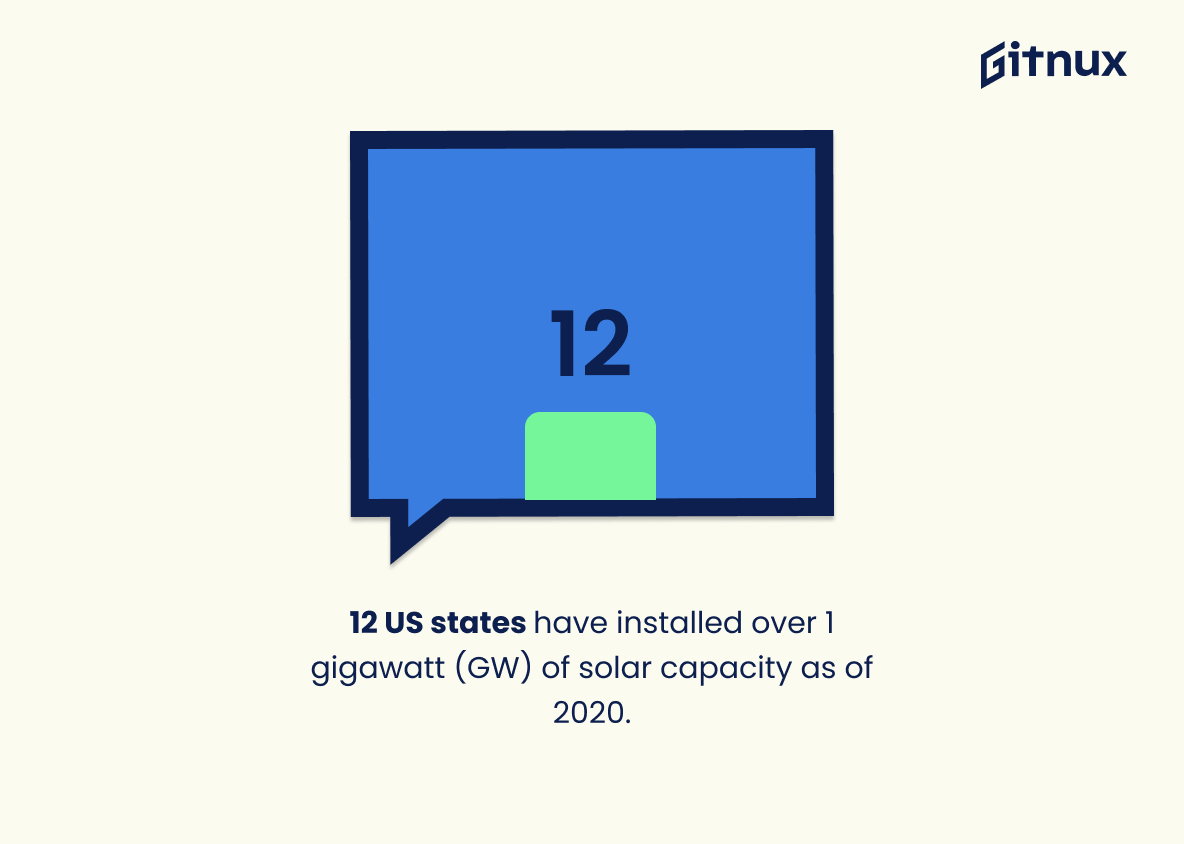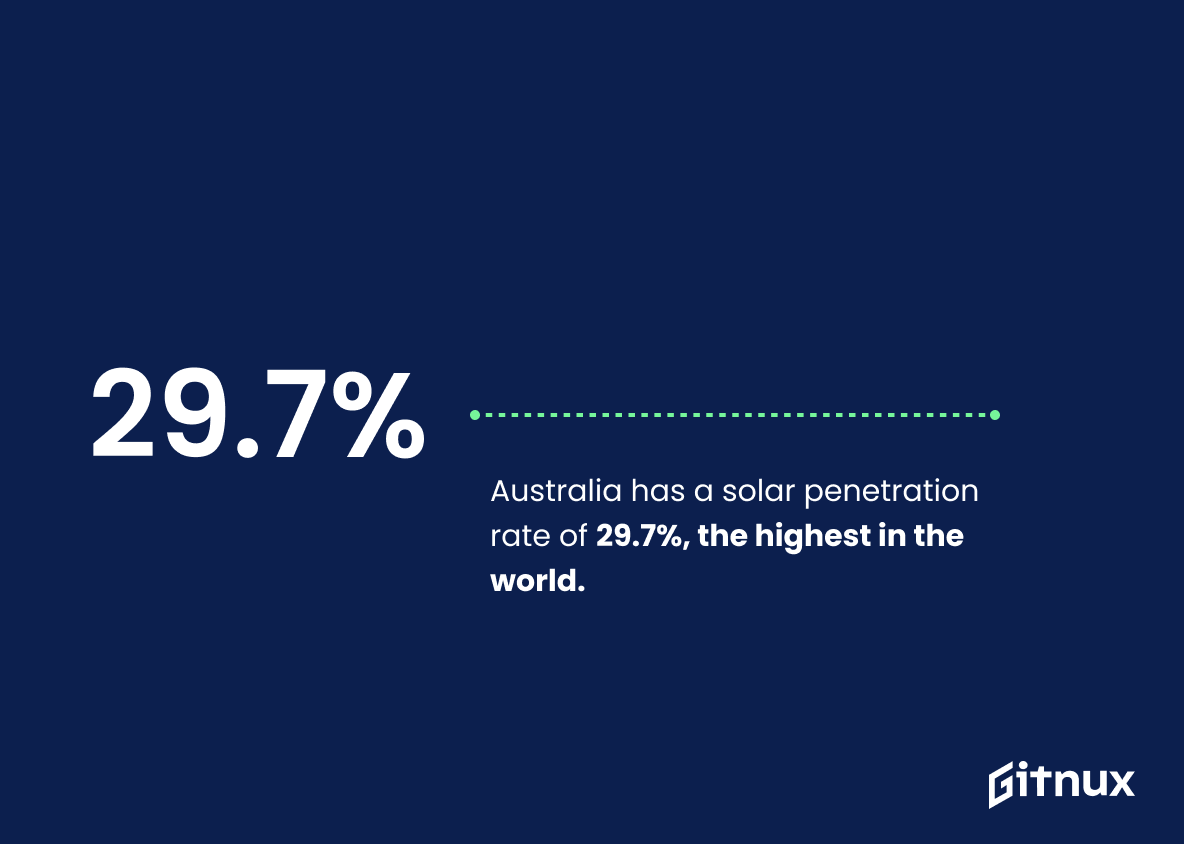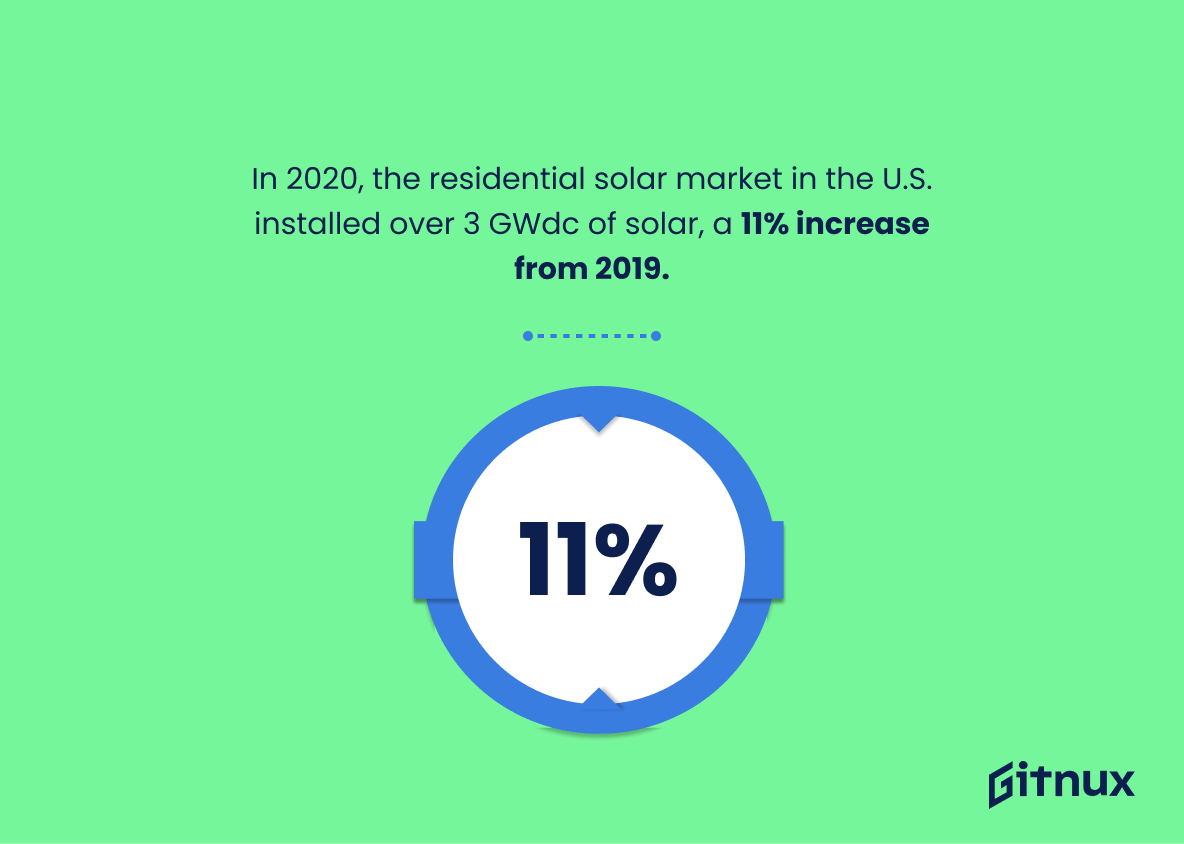As we hurtle towards greener and more sustainable energy sources, the sun plays an increasingly prominent role. Emerging as a valuable player in the global energy market, the solar industry constantly evolves and grows. But just how significant is this growth? That’s what we’ll explore in this blog post. Arm yourself with the most recent solar industry statistics, trends, and projections that will not only illuminate your understanding of this exciting field but may also prompt a conscious transition towards sustainable living. Whether you are a curious homeowner, an eco-entrepreneur, or a solar enthusiast, these insights will equip you with the facts and figures to understand the current landscape and the future trajectory of the solar industry. Let’s delve in, shall we?
The Latest Solar Industry Statistics Unveiled
The global solar energy market was valued at $52.5 billion in 2018 and is projected to reach $223.3 billion by 2026.
In the grand dance of figures, this particular statistic strikes a profoundly significant chord. Just take a minute to absorb the sheer enormity of these numbers. The global solar energy market’s valuation skyrocketed from $52.5 billion in 2018 to a projected jaw-dropping $223.3 billion by 2026. This is more than just arithmetical gymnastics. It is a testament to the overwhelming public and industrial appetite for solar energy.
Such a statistic leaps off the page, especially in a blog post dedicated to Solar Industry Statistics. It paints an indisputable picture of an industry in the throes of explosive growth, underscoring the fact that solar energy isn’t just a fleeting trend but an enduring staple of the global energy supply.
Furthermore, it hints at an evolving narrative. It nudges the readers to question: What is driving this phenomenal expansion? The escalating concerns around climate change? Technological advancements leading to the plummeting costs of solar panels? Increased awareness and investment in renewable resources that’s transforming the ethos of our energy consumption?
This statistic subtly yet strongly supports the claim that the spotlight is now firmly on the solar industry, drawing reader’s attention to the remarkable strength and resilience of this market.
In 2019, solar power generated an estimated 2.7% of the world’s electricity.
Highlighting that solar power generated an estimated 2.7% of the world’s electricity in 2019, serves as a key insight into the still burgeoning yet significant influence of the solar industry on the global energy landscape. It paints an illustrative picture of solar power’s progression into a vital player in the world’s electrical grid, and the extent to which it has started penetrating the energy markets. This singular data point radiates the potential and realistic growth prospects within the solar sector. It undeniably invites us to not only contemplate but also appreciate the transformative role solar power is playing in reducing reliance on non-renewable resources, kindling the conversation about sustainability, and how it is powering our march towards a future of cleaner, greener energy.
As per 2020, China leads the world in solar energy production, with over 250 GW of capacity.
Anchoring the ship of solar energy production, China has been relentlessly illuminating the world with an impressive capacity exceeding 250 GW as recorded in 2020. This salient figure paints a vivid picture of the country’s prowess in harnessing solar energy, setting a formidable benchmark for other nations. Cast in the radiant glow of such a prodigious achievement, China underscores the burgeoning potency of the solar industry on a global scale. This captivating datum is undeniably pivotal in heralding the radical transition to renewable energy sources, simultaneously shedding light on the expanding horizon of the solar industry.
Solar PVs installed for electricity generation reached 708 GW worldwide at the end of 2019.
Building a dynamic picture of the solar industry wouldn’t be complete without this striking piece of data. The staggering fact that global Solar PV installations reached a hefty 708 GW at the close of 2019 presents a compelling narrative of an industry on the rise. Effortlessly, it spotlights the growing commitment of nations worldwide to harness the sun and embark on a renewable energy journey. It demonstrates the industry’s remarkable progress and pace, providing a poignant reminder that solar power is both a prevalent and formidable player in the energy sector. With this statistic, the readers can gaze at the industry’s grand scale and grasp the immense potential that solar energy represents for our sustainable future.
In the United States, 43% of all new electric capacity added in 2020 came from solar.
This illuminating figure serves as a powerful testament to the growing dominance of solar energy in the United States. As the radiant sun of 2020 set, it etched a significant mark; 43% of all new electric capacity came from solar power. It is a revealing metric, proclaiming solar as a rising star on the energy stage. By highlighting the fact that nearly half of all new power generation capabilities infused last year were solar-based, it underscores the compelling shift towards this sustainable energy source, thus painting a gleaming panorama of the Solar Industry’s potential growth and expansion. This sharp surge in solar’s contribution also points towards an encouraging future; one glazed with sustainable, green, and cost-effective energy solutions capable of steering the Nation’s transition towards cleaner energy possibilities.
India plans to reach 100 GW of solar capacity by 2022.
Shedding light on the ambitious goal set by India to achieve a roaring 100 GW of solar capacity by 2022, this datapoint adeptly illustrates the country’s commitment to renewable energy. Serving as a testament to the intensifying global transition towards sustainable sources, this statistic alone provides a vibrant snapshot of the expanding solar industry. It underlines India’s determination to be at the forefront of the solar revolution and hints at the potential market opportunities that could arise in the process. Not to mention, it provides a meaningful backdrop to relating narrative about the intensifying international race toward sustainability and clean energy production. From a blogger’s perspective, this statistic provides an exciting hook, a glimpse into a possible green future that readers would certainly find compelling.
The solar industry employs more than 230,000 people in the United States.
Highlighting the staggering figure of more than 230,000 U.S. employees illuminates the phenomenal strength and significance the solar industry holds within the national occupational landscape. This employment statistic unveils not only the magnitude of the industry, but also its capacity to invigorate economic growth, sprout abundant job opportunities, and shift traditional labor market trends. As a crowning jewel in the solar industry’s radiant crown, this employment number serves as a testament to the industry’s bright future and its unstoppable momentum.
In 2020, Solar PV module prices have fallen by around 89% since the end of 2010.
Showcasing the drastic fall of Solar PV module prices by around 89% since the end of 2010 serves as an undeniable testament to the rapid evolution and affordability of solar technology. In the vibrant chronicles of solar industry statistics, this catapults itself as a pivotal evidence, shedding light on the shifting landscapes. For the consumers, this dramatic price plunge translates into tangible savings, opening up a world filled with abundant sunshine and tailored to sustainability. Furthermore, it illustrates the bright future of solar sector, poised with unlimited potential, paving the way for cleaner, greener and economic power choices.
Solar power usage saved 73 billion tonnes of CO2 emissions in 2018.
Envisioning the impact of this statistic paints a vivid portrait of the dynamic influence the solar industry has on our environment. The colossal 73 billion tonnes of CO2 emissions that were avoided in 2018 would have contributed significantly to the existing greenhouse gas burden, exacerbating global warming. By introducing this significant figure, we underscore how the solar industry isn’t just a business or an alternative source of energy, but a valiant, palpable force in the struggle against climate change. This demonstrable influence further validates the need for expanding solar power usage, accentuating the significance of developing policies and incentives that promote its adoption.
The average installation cost for residential solar panels in the United States is about $2.81 per watt.
Painting a vivid picture of the prevailing financial landscape in the residential solar panel industry, the nugget of information that the average installation cost in the United States stands at approximately $2.81 per watt, serves as a critical touchstone. This figure paves the road for potential users to estimate their initial investment and compare it with future benefits. It’s a financial compass that provides direction towards eco-friendly choices by allowing potential buyers to evaluate their economic viability and return on investment timeline. Furthermore, it shapes a comparative analysis for policymakers and researchers to evaluate the performance of solar against other energy sources and provides a reference point to track progress in cost reduction efforts in this blooming industry. Thus, it bolsters the essence of a blog post dedicated to Solar Industry Statistics, illuminating the monetary factor involved in going green.
Germany is Europe’s biggest market for photovoltaics and produced around 9% of the national power consumption in 2020.
In the energetic realm of solar industry statistics, one might be drawn to the shining beacon of Germany, the crown jewel of Europe’s photovoltaics market. Facts convey that an impressive 9% of the nation’s power consumption in 2020 brimming from solar energy. What does this illuminate, you ask? Well, it’s a testament to the vast, untapped potential of solar energy and its ability to make substantial contributions to a nation’s power grid. Comparatively, this also casts a spotlight on the evolving energy preferences and the shifting paradigms towards renewable resources across the globe. Undeniably, as the largest market in Europe, Germany stands as a powerful exemplar and its success whispers a promise of possibilities to other countries daring to venture into the solar sphere.
12 US states have installed over 1 gigawatt (GW) of solar capacity as of 2020.
Highlighting that 12 US states have installed over 1 gigawatt of solar capacity as of 2020 solidifies the burgeoning outreach and adoption of renewable energy solutions. It is a testament to the growing gravitation toward sustainable and eco-friendly energy alternatives. Not only does it demonstrate a tangible acceleration in the transition from traditional energy sources towards greener alternatives, but it also shines a light on the significant strides being made by the US in the global canvas of solar energy. This data emphasizes the future potential of the solar industry and inspires further investment and research in this sector. It embellishes the post, showcasing the real-world impact and the vital role of solar energy in the nation’s power portfolio.
Australia has a solar penetration rate of 29.7%, the highest in the world.
Bathing under the golden Australian sun, the Land Down Under has outshined every other country when it comes to solar energy adoption with an illuminating figure of 29.7% penetration rate. But why does this particular statistic carry significant weight while delving into the Solar Industry Statistics?
In our quest to harvest sustainable energy, capturing the immeasurable solar power holds the key. And Australia’s glowing number is a beacon, setting a benchmark in global solar energy assimilation. It showcases the level of acceptance, progress, and innovation within the Australian solar industry that has translated into one of the highest utilization rates planet-wide.
Moreover, it is a spotlight shining over the enormous potentials that other countries can draw upon to advance their solar energy infrastructure. This Australian story of solar success is not just a figure but a tale of human endeavor to sail towards cleaner energy. A tale that nudly shows what’s possible, a testament to where a combination of advanced technology, right policy, and public awareness can lead nations.
In essence, this sun-kissed Australian statistic is undeniable proof that bright and sunny days are ahead as we harness the celestial power for a more sustainable world. In a blog post about Solar Industry Statistics, it outshines, outlasts, and undoubtedly becomes indispensable.
Global floating solar capacity surpassed 1 GW in 2018.
Signifying a revolution in the field of renewable energy, the noteworthy achievement of global floating solar capacity surpassing 1 GW in 2018 serves as a tangible proof of technological advancement in the solar industry. It reinforces the notion of solar energy being more than just a ray of hope and moving towards becoming a significant player in the global energy mix. This isn’t just a number, it’s a testament to the world’s growing commitment to sustainable energy sources, embodying the seismic shift from traditional fuels to more environmentally conscious options. This pivotal stride in the solar sector serves as a bellwether for future growth potentials and investment opportunities, making it an essential beacon in our navigation through the solar industry’s statistical constellation.
In 2020, the residential solar market in the U.S. installed over 3 GWdc of solar, a 11% increase from 2019.
Delving into the realm of Solar Industry Statistics, the revelation that the U.S. residential solar market witnessed an installation of over 3 GWdc of solar in 2020, marking an 11% rise from 2019, holds a notable position. This surge unfolds a notion of progressing inclination towards solar energy, flagging a greener shift in the U.S residential energy consumption patterns.
Such a dramatic increase not only showcases the advancements and ongoing investments in solar infrastructure, but it also underlines the burgeoning awareness and acceptance of renewable energy sources among the U.S. households. This growing trend is a significant testament to the vigor and growth potential of the solar industry, thus making this statistic a decisive touchpoint in the narrative of solar industry statistics.
Conclusion
It’s clear from the ongoing trends and recent solar industry statistics that solar energy is not only a viable but a thriving market, ready to reshape the global energy scenario. The increased usage of solar power clearly indicates the world’s eagerness to shift to more sustainable energy options. Economic benefits, decreasing costs, and a greater emphasis on sustainability are all key factors contributing to this positive shift. Continuous advancements and widespread adoption promise an even brighter future for the solar industry. So, whether you’re an investor, researcher, policy-maker, or interested consumer, the solar industry is indeed a fascinating and crucial sector worth watching.
References
0. – https://www.www.iea.org
1. – https://www.iea-pvps.org
2. – https://www.reneweconomy.com.au
3. – https://www.www.woodmac.com
4. – https://www.www.pv-magazine-india.com
5. – https://www.www.alliedmarketresearch.com
6. – https://www.www.worldbank.org
7. – https://www.www.energysage.com
8. – https://www.www.seia.org
9. – https://www.www.thesolarfoundation.org
10. – https://www.www.cleanenergywire.org
11. – https://www.www.statista.com


